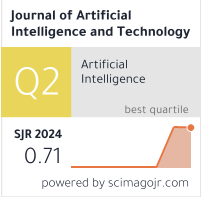Medication Patterns of Traditional Chinese Medicine for Diabetic Cardiomyopathy Based on Data Analysis and Deep Reinforcement Learning
DOI:
https://doi.org/10.37965/jait.2025.0718Keywords:
Data analysis, diabetic cardiomyopathy, deep reinforcement learning, K-means clustering, medication patternsAbstract
Artificial intelligence-related technologies have been widely used in many industries, such as the Internet, finance, medical care, and education. This study is conducted in order to accurately analyze the medication patterns of diabetic cardiomyopathy. A deep reinforcement learning algorithm is proposed and optimized using K-means clustering data analysis in artificial intelligence learning algorithms. The optimized algorithm is also used to construct a medication law analysis model, with a view to analyzing the Chinese medicine medication law of diabetic cardiomyopathy through this model. The study first analyzes the optimized algorithm for comparison experiments. The results demonstrated that the prediction error rate of the optimized algorithm was only 1.2%, and the prediction speed reached 8.2 bps. Moreover, the checking rate of the algorithm reached 98.7%, and all the performances were optimized for the comparison algorithm. The analytical model based on this algorithm was tested. The results indicated that the accuracy of the model in analyzing patients’ medication patterns reached 99.5%. Moreover, the medical resource utilization was increased by 34.3% with the use of this model. From these results, it can be concluded that the analysis model proposed in the study can accurately analyze the medication pattern of patients with diabetic cardiomyopathy so as to reduce the waste of resources and accelerate the speed of recovery of patients.
Downloads
Published
How to Cite
Issue
Section
License
Copyright (c) 2025 Authors

This work is licensed under a Creative Commons Attribution 4.0 International License.




